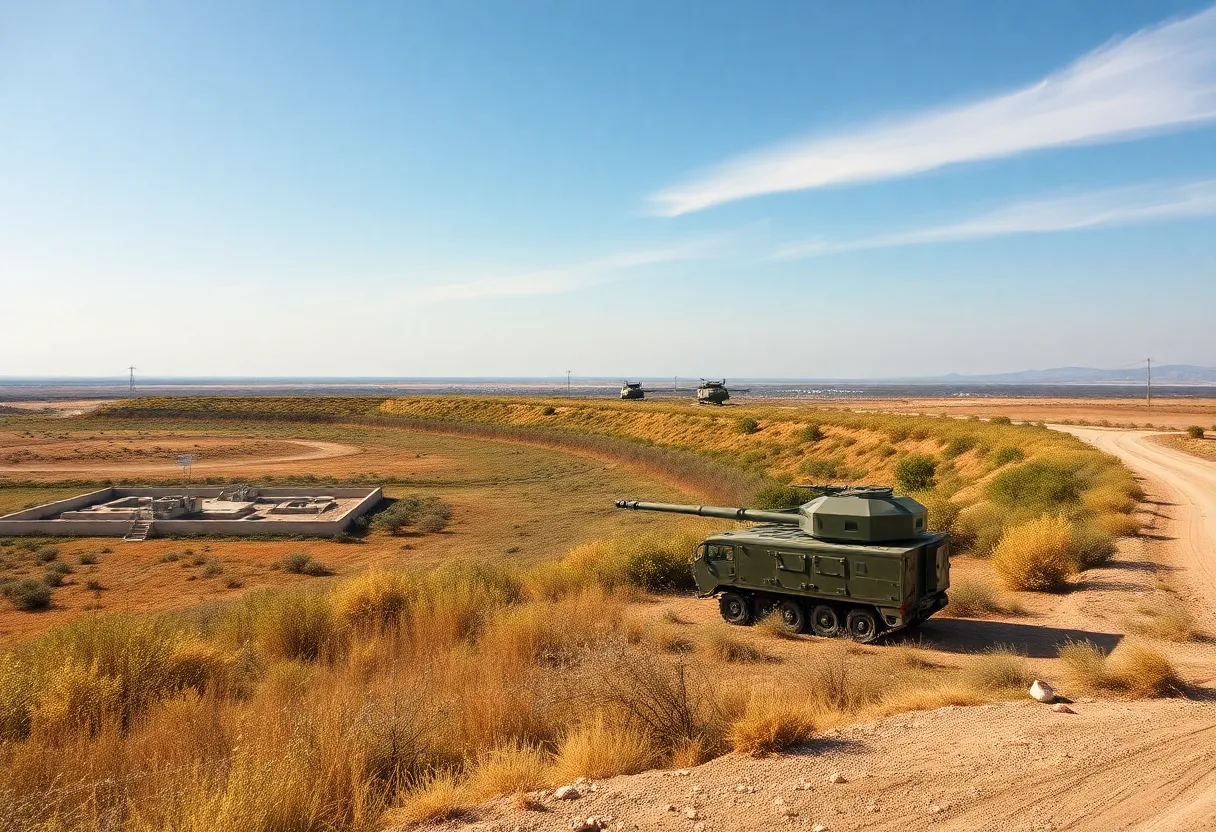News Summary
The Trump administration has announced a significant plan to bolster border security by creating a 60-foot militarized buffer zone near the U.S.-Mexico border in New Mexico. Active-duty troops will be stationed to detain unlawful migrants, raising legal and community concerns. This initiative aims to transform border management, particularly around Sunland Park, while experts express worries about its environmental and social impacts amidst declining migration rates.
Trump Administration’s Bold New Plan for Border Security
The Trump administration is embarking on an ambitious project aimed at strengthening security along the U.S.-Mexico border, specifically in New Mexico. This new initiative proposes the establishment of a **60-foot militarized buffer zone** that would effectively transform parts of this border area into a military installation. So, what does this mean for the people living nearby and for those who may attempt to cross the border?
Active-Duty Troops to Take Charge
Under the proposed plan, **active-duty U.S. troops** will be stationed in the buffer zone, assigned the responsibility of detaining migrants who cross unlawfully into the United States. These troops would have the legal authority to “hold” individuals until they can be handed over to immigration authorities. Essentially, anyone entering this secured area without permission will be seen as **trespassing on a military base**, which adds a whole new level of seriousness to the situation.
Changing the Landscape of Border Management
A significant focus of this initiative is **Sunland Park**, located just beside El Paso, which is known as a major crossing point. The current border fencing actually ends at the breathtaking site known as Mount Cristo Rey, making it a particularly symbolic location for these enforcement changes. With this military presence, the landscape of border management is expected to shift dramatically.
Legal Considerations and Military Engagement
Though the idea of deploying troops raises eyebrows, the **Posse Comitatus Act of 1878** prevents the military from engaging in civilian law enforcement, unless exceptions are made by the president. The Trump administration is crafting this plan with these legal considerations in mind, aiming to ensure compliance while still beefing up border protection. However, experts in national security are already voicing concerns about potential pushback from within the Pentagon regarding the rules of engagement and the deployment of troops.
Current State of Border Militarization
This initiative comes on the heels of existing military deployments along the border, notably **Texas Governor Greg Abbott’s Operation Lone Star**, which has cost Texas taxpayers an astonishing **$11 billion since March 2021**. Since then, troop numbers have increased, with around **9,600 troops currently stationed** along the border. Meanwhile, the Mexican government has also taken action, deploying **10,000 National Guard troops** in February to combat various challenges such as human and drug trafficking.
Trends in Migration
Interestingly, despite these heightened security measures, recent reports show that **migrant encounters at the southern border have dropped to an all-time low**. For instance, in February, the **El Paso sector recorded only 2,110 encounters** compared to a staggering **23,919 the previous year**. This stark decrease raises questions about the **performative nature** of troop deployments given the current low levels of migration.
Community Concerns and Environmental Impacts
Local officials, community advocates, and environmentalists are expressing unease about this militarization. The potential transfer of federal land to military authority could come at a cost, impacting not only **endangered species** but also **cultural sites** that hold significance for local communities. There’s a growing sense that the **militarization of border areas** could adversely affect community relationships and land use, creating a rift where collaboration is needed.
Political Reactions and Future Implications
As with any significant political move, responses have varied. Some politicians support this militarization for the sake of national security, while others voice concerns about environmental and community implications. Critics stress that this initiative has largely proceeded without sufficient public input, raising the question: how will this affect those who live and work in border regions? As this plan unfolds, it will be essential for citizens and policy makers alike to stay informed about the implications of these changes on both human lives and the environment.
In a nutshell, the Trump administration’s proposal is certainly a bold one, setting the stage for what could be a transformative chapter in how the country manages its borders. As debates heat up about its legality and practicality, the future holds many answers regarding the militarization of this sensitive area.
Deeper Dive: News & Info About This Topic
- El Paso Times: Trump Administration’s Border Plan
- Wikipedia: United States-Mexico Border
- Source NM: Military-Controlled Border Zone
- Google Search: Trump Administration Border Military
- The Guardian: New Mexico Militarized Border
- Encyclopedia Britannica: Military
- Santa Fe New Mexican: Border Militarization and Land Transfer
- Google News: Border Militarization 2025
- Border Report: Migrant Arrests in Military Zone
- Google Scholar: Border Security
- NM Political Report: Military Detaining Migrants

Author: STAFF HERE PETERSBURG WRITER
The ST PETERSBURG STAFF WRITER represents the experienced team at HEREStPetersburg.com, your go-to source for actionable local news and information in St Petersburg, Pinellas County, and beyond. Specializing in "news you can use," we cover essential topics like product reviews for personal and business needs, local business directories, politics, real estate trends, neighborhood insights, and state news affecting the area—with deep expertise drawn from years of dedicated reporting and strong community input, including local press releases and business updates. We deliver top reporting on high-value events such as Grand Prix of St. Petersburg, Localtopia, and SHINE Mural Festival. Our coverage extends to key organizations like the St. Petersburg Area Chamber of Commerce and St. Pete Downtown Partnership, plus leading businesses in finance, manufacturing, and healthcare that power the local economy such as Raymond James Financial, Jabil, and Bayfront Health St. Petersburg. As part of the broader HERE network, including HEREJacksonville.com, HEREOrlando.com, HERETallahassee.com, and HERETampa.com, we provide comprehensive, credible insights into Florida's dynamic landscape.





